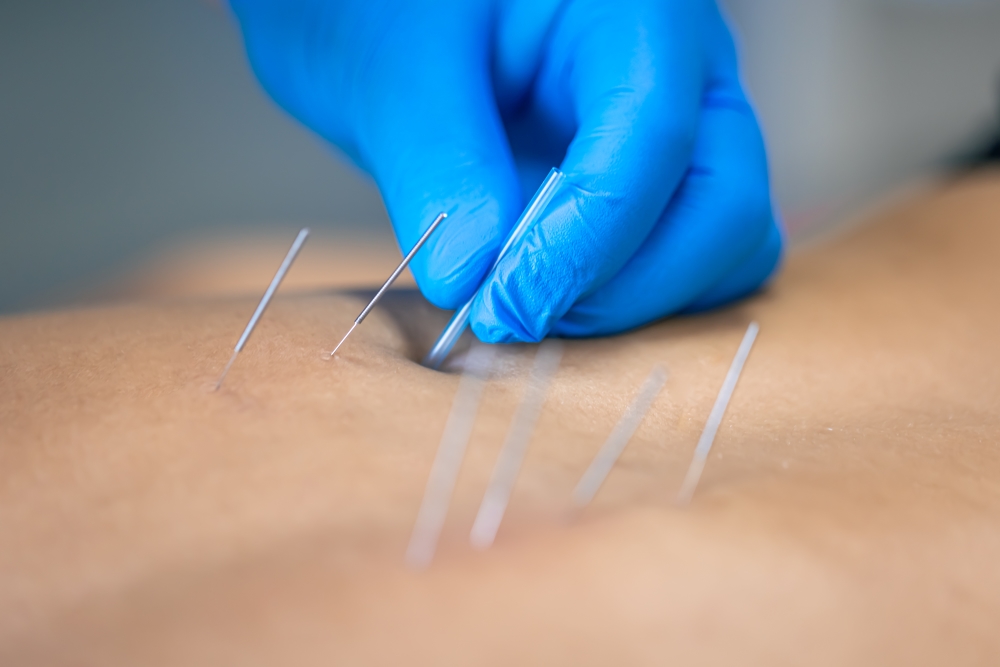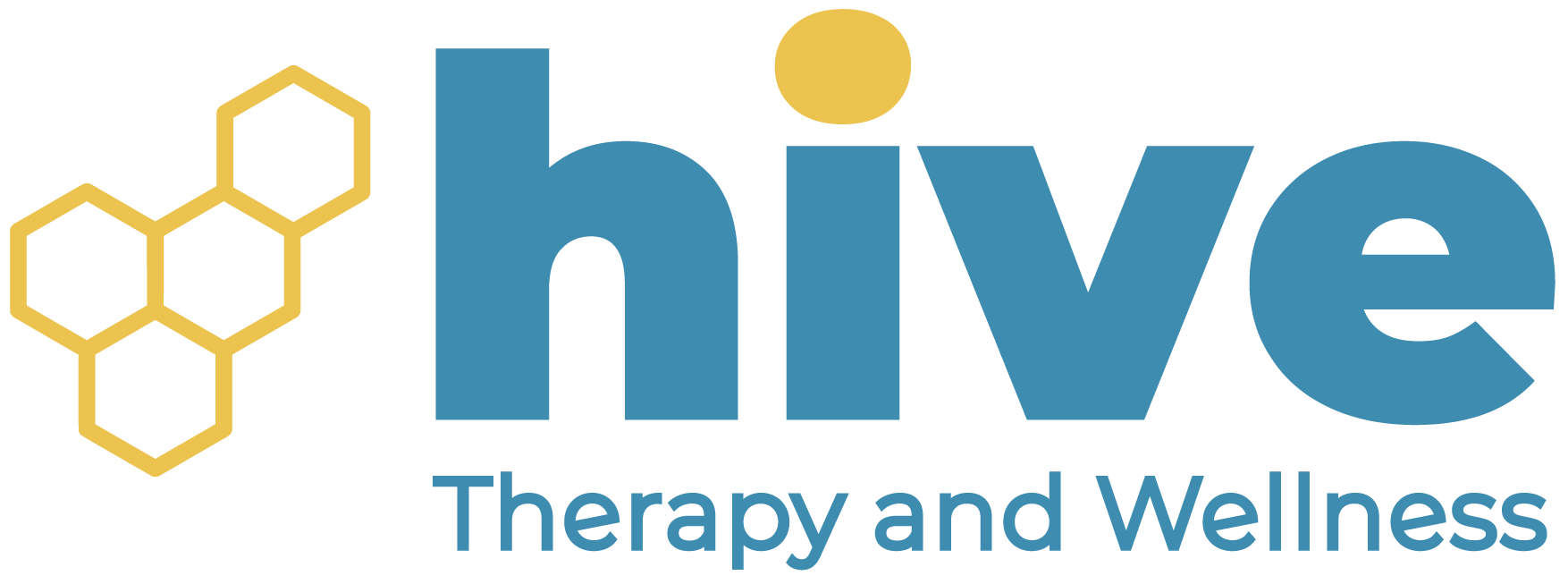Dry Needling
Dry needling involves inserting thin needles into muscle tissue to improve function and alleviate pain.
What Is Dry Needling?
Dry needling treatments involve one or multiple very thin needles, which are placed into muscle tissue to help relieve pain and improve range of motion and muscle function. Dry needling is not to be mistaken with acupuncture; although the needles for both of these interventions are similar, the purpose, benefits, and provider’s training differs.
Dry needling treatments focus on the motor units of a muscle, and affect how your muscles, tissues, and brain interact. This intervention is often combined with electrical stimulation application. Combining these treatments helps to activate the areas of the brain that are associated with the target tissue area; which can decrease pain as well as improve movement patterns, range of motion, and strength.

During dry needling treatments, the needles are placed within a muscle or muscles that surround a joint or specific target treatment areas. Needles can also be placed in or around scar tissue, which may help improve the appearance, texture, and flexibility of the scar. It is important to note that needle placement and use of electrical stimulation can depend on the individual training of the physical therapist. At Hive Therapy and Wellness, our physical therapists have undergone extensive training. They are able to place needles in a variety of tissues and for a plethora of conditions; as long as consent is provided by the patient and proper screening is completed.
Who Can Benefit From Dry Needling?
Dry needling treatments are used to relieve pain, alleviate trigger points, and improve range of motion; meaning they are suitable for many patients. Patients who have post-surgical scars, chronic abdominal or pelvic pain, or who experience mobility restrictions can benefit from dry needling. Those who experience headaches or migraines can also find relief with this treatment.
Generalized muscle soreness can be relieved with dry needling, but this treatment can also be helpful for recovery from strenuous exercise. It does this by increasing blood flow, removing toxins and down regulating the nervous system which can help to reduce muscle tightness and allow the muscles to function more optimally. Hive Therapy and Wellness often provides dry needling treatments for our athletes who enjoy the muscle recovery benefits of this intervention.
Patients may receive dry needling treatments to help with acute or chronic pain, muscle weakness, and acute or chronic swelling. It can be used to relieve pain in and around joints, including areas of the body such as the back, hips, knees, ankles, feet, hands, elbows, shoulders, TMJ, and neck. As you can see, dry needling treatments are utilized for a variety of pain relief needs!
Although there are great benefits with dry needling, there may be certain medical conditions or contraindications that would preclude some patients from receiving this type of therapy. Your therapy provider will thoroughly discuss contraindications with you to help ensure you are able to safely receive this intervention. Patients with the following characteristics should not receive dry needling:
- Needle phobia
- Bleeding disorders
- Local Infection
- Over areas of reduced sensation
- Cognitive Impairment
What to Expect From Dry Needling
As the name suggests, dry needling does not involve any injections or fluids. It is simply a thin needle that is inserted into the skin and underlying tissue. While dry needling offers the benefit of long-term pain management or relief, the level of pain or discomfort experienced during the intervention is different for each person. The needle is very thin, but it is normal to feel a pricking sensation during insertion. Patients may also experience a twitching sensation, which is an expected response and an indication that your muscle is reacting to the treatment.
Post-treatment soreness is completely normal and not unexpected, but should go away within 24 to 48 hours. In order to help with this soreness, it is important to engage in regular movement as well as proper hydration. If it lasts longer than 48 hours or feels excessive, you should discuss this with your provider so that they can make modifications to your next session.
Dry needling treatments involve one or multiple very thin needles, which are placed into muscle tissue to help relieve pain and improve range of motion and muscle function. Dry needling is not to be mistaken with acupuncture; although the needles for both of these interventions are similar, the purpose, benefits, and provider’s training differs.
Dry needling treatments focus on the motor units of a muscle, and affect how your muscles, tissues, and brain interact. This intervention is often combined with electrical stimulation application. Combining these treatments helps to activate the areas of the brain that are associated with the target tissue area; which can decrease pain as well as improve movement patterns, range of motion, and strength.
During dry needling treatments, the needles are placed within a muscle or muscles that surround a joint or specific target treatment areas. Needles can also be placed in or around scar tissue, which may help improve the appearance, texture, and flexibility of the scar. It is important to note that needle placement and use of electrical stimulation can depend on the individual training of the physical therapist.
At Hive Therapy and Wellness, our physical therapists have undergone extensive training. They are able to place needles in a variety of tissues and for a plethora of conditions; as long as consent is provided by the patient and proper screening is completed.
Dry needling treatments are used to relieve pain, alleviate trigger points, and improve range of motion; meaning they are suitable for many patients.
Patients who have post-surgical scars, chronic abdominal or pelvic pain, or who experience mobility restrictions can benefit from dry needling. Those who experience headaches or migraines can also find relief with this treatment.
Generalized muscle soreness can be relieved with dry needling, but this treatment can also be helpful for recovery from strenuous exercise. It does this by increasing blood flow, removing toxins and down regulating the nervous system which can help to reduce muscle tightness and allow the muscles to function more optimally. Hive Therapy and Wellness often provides dry needling treatments for our athletes who enjoy the muscle recovery benefits of this intervention.
Patients may receive dry needling treatments to help with acute or chronic pain, muscle weakness, and acute or chronic swelling. It can be used to relieve pain in and around joints, including areas of the body such as the back, hips, knees, ankles, feet, hands, elbows, shoulders, TMJ, and neck. As you can see, dry needling treatments are utilized for a variety of pain relief needs!
Although there are great benefits with dry needling, there may be certain medical conditions or contraindications that would preclude some patients from receiving this type of therapy. Your therapy provider will thoroughly discuss contraindications with you to help ensure you are able to safely receive this intervention. Patients with the following characteristics should not receive dry needling:
- Needle phobia
- Bleeding disorders
- Local Infection
- Over areas of reduced sensation
- Cognitive Impairment
As the name suggests, dry needling does not involve any injections or fluids. It is simply a thin needle that is inserted into the skin and underlying tissue.
While dry needling offers the benefit of long-term pain management or relief, the level of pain or discomfort experienced during the intervention is different for each person. The needle is very thin, but it is normal to feel a pricking sensation during insertion. Patients may also experience a twitching sensation, which is an expected response and an indication that your muscle is reacting to the treatment.
Post-treatment soreness is completely normal and not unexpected, but should go away within 24 to 48 hours. In order to help with this soreness, it is important to engage in regular movement as well as proper hydration. If it lasts longer than 48 hours or feels excessive, you should discuss this with your provider so that they can make modifications to your next session.


